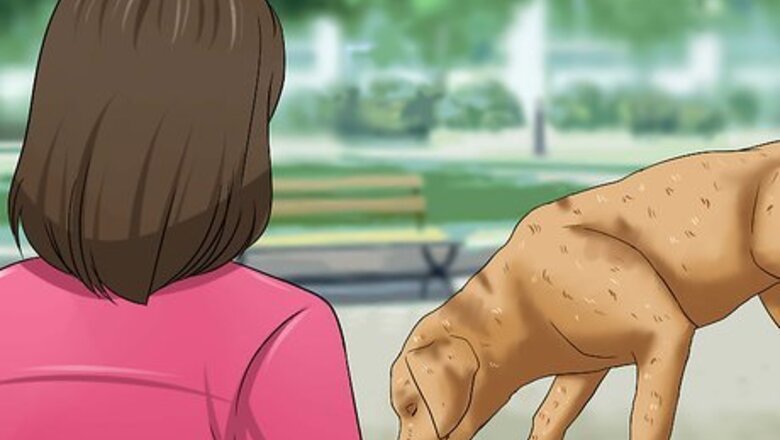
views
X
Research source
Practical emergency and critical care nursing. Aldridge. Publisher: Wiley-Blackwell.
Recognizing dehydration is the first step in either correcting the problem yourself, by making sure the dog has enough to drink or seeking veterinary help if needed.
Checking for Signs of Dehydration
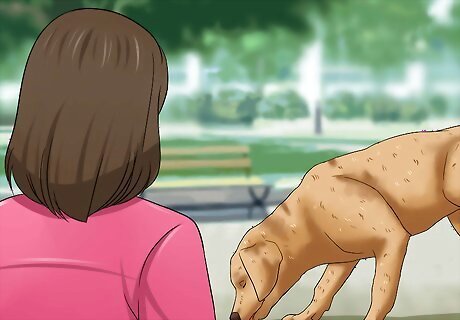
Pay attention to your dog's behavior. A dehydrated dog with the energy to do so will typically seek water to drink. If your dog is dehydrated, you may notice unusual behavior, such as restlessness or pacing, as if looking for water. Your dog may repeatedly lick its lips and/or have an anxious facial expression if it is unable to find enough water. Some dehydrated dogs will also lie with their nose resting against their water bowl.
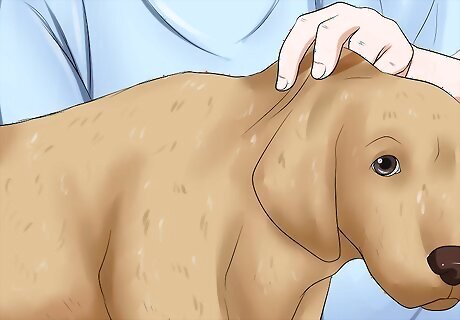
Check the dog's scruff. The classic dehydration test that you've probably seen the vet do at the animal clinic is lifting the dog's scruff. What this test actually measures is the skin's elastic recoil, which decreases with dehydration. To do this test yourself, take the following steps: Locate the dog's scruff. This is the loose skin over the dog's shoulders or at the back of its neck. Elevate the scruff. Grasp the skin and gently raise it two to three inches above the dog's back in a vertical direction. Release the scruff and observe. Fully hydrated skin springs back instantaneously. When dehydration is present, the skin is less elastic, which means it will not fall back as quickly. If the skin takes more than two seconds to return to normal, the dog is dehydrated.
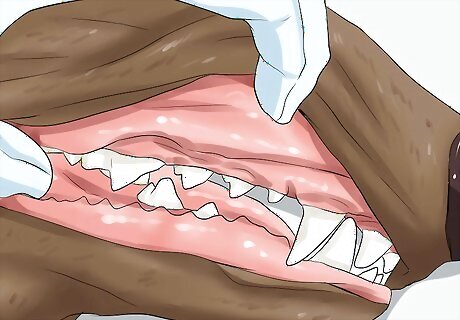
Check the dog's gums. Gums are a good indicator of early dehydration. Normal gums are moist and shiny, much like our own. Dehydrated animals often have dry or tacky feeling gums, because they produce less saliva. Be aware that anxious or frightened animals may also have dry gums. Make sure your dog is relaxed when you check the gums or you can be misled.
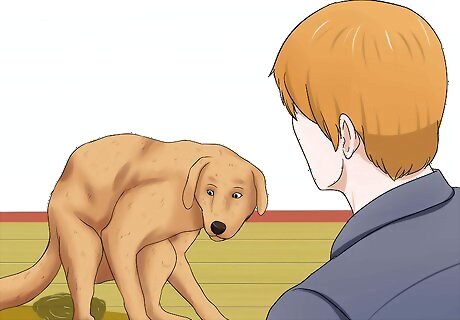
Check your dog's urine. If a dog does not take in enough water, its body will automatically take steps to preserve fluid. In this situation, it either will not urinate because its bladder is empty, or the urine it produces will be very concentrated. Concentrated urine is a deep yellow color. This occurs because the dog's kidneys are working hard to recycle water in the body and hold onto it. Take note if your dog seems to be urinating less than usual or if its urine is an unusual color.
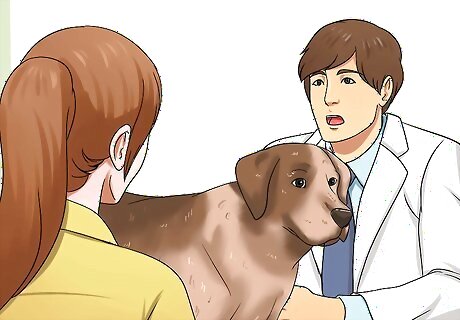
See a veterinarian. If your dog seems healthy and there is a simple explanation for your dog's condition, such as an empty water bowl, give the dog water and watch for signs of improvement. If however, the dog is dehydrated and seems sick, or if providing water doesn't help, contact your veterinarian. Some dehydrated animals need to receive fluids through an IV in order to protect their organ functions while they rehydrate.
Recognizing the Risk Factors for Dehydration
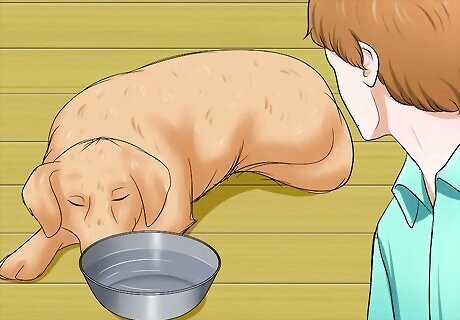
Keep an eye on the water supply. There are many circumstances that can cause a dog to become dehydrated, but the most obvious and easy to control is your dog's access to water. If the dog drinks all of its water, or its water bowl gets knocked over and it is left without a refill for a long period of time, this can result in dehydration. Make sure your dog has ample water, especially on hot days. Dehydration can occur quickly, sometimes within an hour or so depending on the temperature.
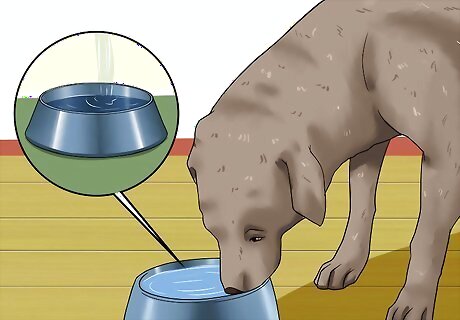
Make sure the dog drinks regularly. Even if your dog has access to water, it will become dehydrated if it doesn't drink it often enough. Keep an eye on your dog to make sure it visits the water bowl frequently. For example, an older dog that suffers from arthritis and is too sore to get up and drink when it is thirsty is at risk of becoming dehydrated. The problem is made worse if the dog has other health problems such as diabetes or renal disease because its body will tend to produce a lot of urine. A dog with these problems will lose fluid at a faster rate than a healthy animal. This form of dehydration is chronic, which means it develops slowly over several days and is likely to reoccur. Likewise, if a dog is ill and stops eating and drinking due to a lack of appetite, it is at risk of dehydration.
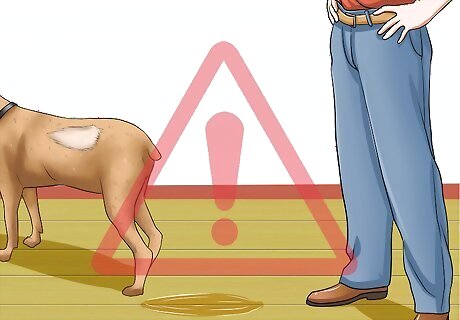
Beware of diarrhea. Watery feces contains a lot of fluid, which means more rapid loss of water, and thus an increased risk of dehydration. If the dog is drinking enough, the risk of dehydration is reduced. A dog without access to water or with no desire to drink, however, can become dehydrated very quickly if suffering from diarrhea.
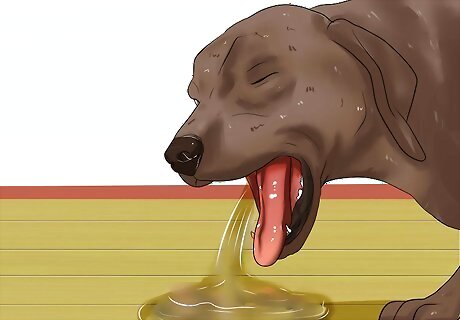
Watch for vomiting. Vomiting can be a serious problem because the dog is unable to retain any water it drinks. Closely watch a dog that is vomiting and contact the veterinarian if you suspect he is dehydrated or if the condition occurs often.

















Comments
0 comment